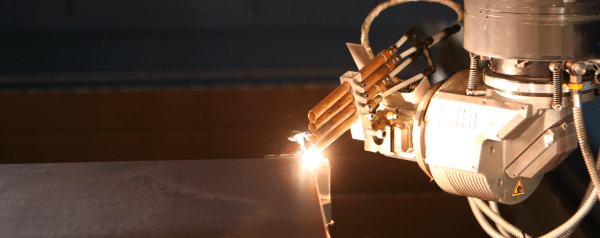3D laser welding is ideal for intricate heat placement and fusing when manufacturing medical devices and equipment. Laser systems make fewer mistakes and allow for cutting cleaner, more detailed designs. In addition, the laser technology’s automated programming and precision allow for more efficient waste management due to the accuracy and use of raw materials.
At Estes, 3D laser technology is used to adapt fabricated sheet metal products to hospital standards. Laser welding can be used in place of more standard welding approaches, such as electron-beam, ultrasonic, and electric resistance. The use of lasers allows for more efficient manufacturing and use of plant space, as many operations can be done using one laser system or cell.
How It’s Done
Simply put, welding consists of heating materials to a melted state to then fuse together permanently. Laser welding is different than traditional welding techniques, however. Lasers generate light that creates heat when absorbed into targeted materials. They are inefficient converters of electricity, achieving only 2 to 15 percent energy conversion depending on the laser used. Ironically, despite the inefficiency through the transformation of electricity to heat, lasers make up for that through their speed and precision. By heating up the point of laser focus above the boiling point, a hole is created in the metal called a keyhole. This keyhole, filled with ionized metallic gas, absorbs the metal around it and solidifies as the laser moves along the piece, creating a smooth finish and seal.
Advantages of Laser Welding Medical Equipment
- More flexible and versatile in performing multiple operations
- No filler metals required
- Faster welding rates
- Non-contact
- Online programming and processing
- Welds impossible geometries and designs
- Minimal heat input in small areas
For more information on laser welding medical solutions, contact Estes today.
Is Laser Welding the Optimal Choice for Your Welding Project?









